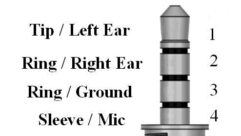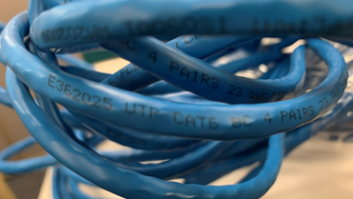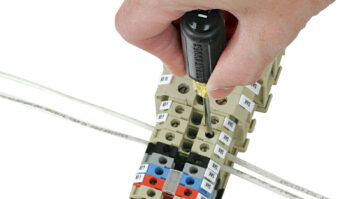
Fig. 1: This termite damage is to the trim around a studio window.
When we think of insect pests, we might think first of hornets, wasps or bees. Fig. 1 reminds us of another worry: termites.
Even the trim around studio walls and windows can fall victim to these nasty insects. Watch for their swarms as well as their dried mud tunnels running up the side of buildings.
Don’t wait until the problem gets this serious; seek professional help early and save your structures.
Perhaps you think that because you occupy a concrete or metal structure, you don’t need to worry. Read on to learn otherwise.
* * *
Ted Fuller of Fuller Electronics in North Carolina was at a contract station’s transmitter site, re-routing a section of half-inch Heliax brand cable recently. The cable was buried in sand that filled a trough in a concrete floor. It is pictured in Fig. 2.
Ted had to dig the cable out to move it. As he did, he noted termite dirt encrusting the Heliax cable jacket.

Fig. 2: A cable, buried in the sand, looks benign … Upon removing the dirt, Ted was surprised to find that some of the jacket was eaten away, exposing the copper, shown in Fig. 3. Can you imagine what they would do if they got into the foam?
Just another issue for engineers to deal with.
* * *
Normally you might see nice, new, pristine studio spaces gracing the pages of Radio World.
It isn’t the case here. When those big back-to-back blizzards blew through Washington recently, Radio America Production Director Al Peterson received doctor’s orders to stay home to tend to his wife, who was recovering from surgery. But hours of pre-produced programs had to go up for the weekend, and some were live-to-disk interview shows that had not yet been recorded.
Al’s home studio had been down for months for a redesign; and even then it had been set up primarily for electronic music production and not creation of talk shows.
So with time and weather against him, Al commandeered his basement ham shack. He stuffed it with two old computers, a 12-year-old Mackie 1202 mixer, an M-Audio PC audio interface, a Telos One digital phone hybrid borrowed from work and yards of audio, network and telephone cable going everywhere. After Al downloaded some free software to get rolling, it was time to put shows together and save the weekend.
Remote hosts who normally dial into the studios via ISDN instead called Al’s computer via Skype, the popular free VoIP application which, on good days, gives performance close to G.722 audio. Guests rang in on Al’s home phone instead of the studio’s call-in numbers.

Fig. 3: … until the dirt is wiped off. Termites have eaten the outer jacket. Segments were recorded and edited using the free Audacity audio editor, with final processing done on an old version of Cool Edit in Al’s ham radio computer.
Over the air, the home-cooked audio was indistinguishable from that produced at the network’s Arlington, Va., studios.
Shows were uploaded to Radio America’s secure FTP site using free WinSCP software. The programs were imported into the network’s elaborate Rivendell audio management system via RealVNC, more free software that allows remote control of distant computers via the Internet.
The weather is better now, as is Al’s wife; and he is back in the network studios. But for one winter weekend, this ungainly assemblage of second-hand gear and a bunch of free software unexpectedly came together in the corner of a basement and saved a snowy weekend.

Fig. 4: Man it’s ugly, but it worked. Al Peterson’s emergency blizzard ‘production room.’ * * *
Ron Kumetz is the director of engineering for Broadcast Devices Inc. Ron writes that while the Workbench column in the Feb. 10 issue addressed hot switching, one of the major issues concerning motorized RF switches, we did not mention the most foolproof solution.
The BDI SWP-200, winner of a 2009 Radio World “Cool Stuff” Award, is an integrated switch controller and power monitoring solution. This integration allows the SWP-200 to sense RF power in the line and prevent hot switching.
It’s been BDI’s experience that interlock connections are not always connected correctly and are, in some cases, even bypassed. This creates a scenario for a potential disaster.
After turning off the transmitter(s), the SWP-200 checks for RF and will not attempt to move a switch if there is RF present.
You can find out more about this “smart” switch controller by visiting www.broadcast-devices.com.
John Bisset marked his 40th year in broadcasting recently. He is international sales manager for Europe and Southern Africa for Nautel and a past recipient of the SBE’s Educator of the Year Award. Reach him at[email protected]. Faxed submissions can be sent to (603) 472-4944.
Submissions for this column are encouraged and qualify for SBE recertification credit.












